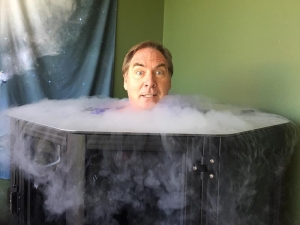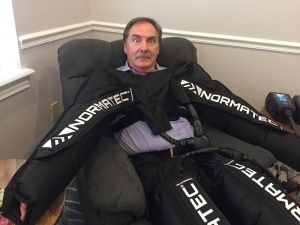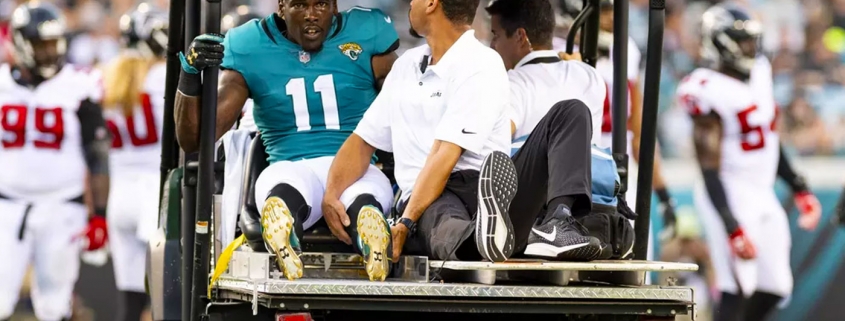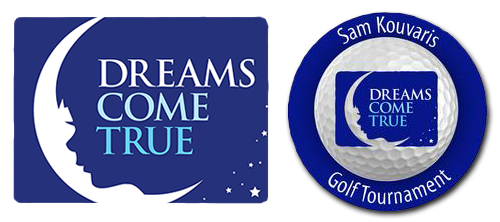Recovery is the Latest in the NFL
 There’s a scene in Godfather II where Vito Corleone is in his dimly lit apartment worried about his son Fredo. Fredo has pneumonia and is being tended to by his mother and a nursemaid using a glass tumbler with a flame underneath. The thought was it would suck the illness out of his tiny body. It’s a centuries old routine done by the Chinese, the Greeks and the Italians among others. I saw my grandmother use that process calling it, “ta koopia” in her island/mountain Greek/English.
There’s a scene in Godfather II where Vito Corleone is in his dimly lit apartment worried about his son Fredo. Fredo has pneumonia and is being tended to by his mother and a nursemaid using a glass tumbler with a flame underneath. The thought was it would suck the illness out of his tiny body. It’s a centuries old routine done by the Chinese, the Greeks and the Italians among others. I saw my grandmother use that process calling it, “ta koopia” in her island/mountain Greek/English.
Who’d have believed that a modern-day version of that is considered “cutting edge” in the world of sports recovery?
“If after our evaluation you need cupping, we can do that for you,” said Ashley Isleborn who operates the Sports Recovery Annex in San Marco. “Cupping creates a vacuum effect that brings nutrient rich blood into the area. It promotes healing and increases range of motion in the muscles.”
Watching the Olympics you probably saw local swimmer Caleb Dressel with round bruise marks on his back and shoulder in a pattern. That’s from cupping.
 The Sports Recovery Annex is one of about a half-dozen recovery businesses that have opened in town in the past two years. They all emulate the tools and services training rooms for professional sports teams have to keep their players in the game. Blue 32 is run by former Jaguars DB Drayton Florence. Current Jaguars DL Malik Jackson has part ownership in Recovery Zone in Riverside. Professional golfer Russell Knox helped start Cryotherapy Jax on the Southside.
The Sports Recovery Annex is one of about a half-dozen recovery businesses that have opened in town in the past two years. They all emulate the tools and services training rooms for professional sports teams have to keep their players in the game. Blue 32 is run by former Jaguars DB Drayton Florence. Current Jaguars DL Malik Jackson has part ownership in Recovery Zone in Riverside. Professional golfer Russell Knox helped start Cryotherapy Jax on the Southside.
“We saw a need for a community type athletic training room,” Iselborn added. “We wanted to make the equipment and medical professionals that are available to professional athletes available to the general public.”
Cupping is just one of numerous new-wave tools athletes, from professionals to weekend warriors, are using to recover, recuperate and perhaps extend their careers.
“I do it all,” Jaguars Defensive Lineman Calais Campbell told me after the Patriots game. “Massage, cryotherapy, Normatech, GameReady, dry needling, acupuncture, you name it. What ever I can do to get ready to play.”
Recent research has shown that active recovery is the next step in getting your body ready to perform again. You might not recognize any of those product names, but they’re everyday happenings for current NFL players. Teams even have a hyperbaric chamber (the thing Michael Jackson used to sleep in) to promote healing.
Former Jaguar John Jurkovic once said that playing on the defensive line in the NFL is like “being in 42 car wrecks in the same day.” And anybody who’s played football knows the difference of being “in shape” or being “In football shape.” You know that soreness that comes a few days into practice. They even have a clinical name for it now, “DOMS.” Delayed Onset Muscle Soreness.”
Cryotherapy is a three-minute process, getting into a gas-filled chamber up to your neck that cools down to minus 200 degrees. Normatech is a full body compression system designed to flush the lactic acid out of your limbs. GameReady combines compression and cold and can reduce swelling. Acupuncture has been around for 5,000 years and is part of every NFL team’s recovery regimen. And dry needling is just what it sounds like. They insert these small needles into a problem area, hook them up to some electric stimulation and it helps “release” that muscle.
Teams all over professional sports have come a long way in a short time.
Former NFL running back Pete Banaszak laughs about guys smoking in the locker room at halftime in the ‘60’s and “70’s. “Biletnikoff was always walking around looking for a light,” he said.
“You’d do the hot tub/cold tub treatment but basically you were just sore all the time,” he added.
Twenty years later, Jaguars Linebacker Tom McManus was among the early adopters of an active recovery regimen.
“I’d get two massages a week,” he recalled. “The first a deep tissue that really hurt, and one later to help me get loose. I’d see a chiropractor once a week during the season. I’d get in a cold tub almost every day. Up to my neck. That cold down to my bones I liked.”
I was walking into the Jaguars locker room in Stevens Point, Wisconsin during their first training camp when McManus’ teammate, running back Randy Jordan literally climbed into a trashcan full of ice and water.
“Nothing, I hate the cold,” Linebacker Telvin Smith said when I asked him what he does for recovery. “A couple of massages, that’s about it.”
Quarterback Blake Bortles says he does some but he probably hasn’t given enough of the new tech a chance. He sticks to a routine. “Massages, hot tub, cold tub, the regular stuff,” he said standing in front of his locker with a few cupping marks on his back.
“I was old school,” Guard A.J. Cann said of his thought process coming out of college. “I’d just work through it and get back out there. But some of the guys said ‘you have to invest in this’ meaning your body. So now I do all of it. Dry needling? It hurts, but it works.”
In his seventh year in the league, Safety Tashaun Gipson says his age has already caught up with him. He’s now working on active recovery in a lot of ways.
“I don’t know, since I turned 28 I’ve really started to do some things,” he said. “I used to not even stretch before games. Guys in Cleveland would make fun of me. Now, our massage therapist says I get more massages than anybody else. You have to take care of this body.”
Like a lot of players, he’s taking it to a new level. Shunning old eating habits, getting the proper rest, using the active recovery tools, Gipson says it’s made him a better player.
“I used to have taco Tuesdays, had to have my Chick-fil-a on Wednesday. I could eat French fries with every meal. Not anymore. I’ve hired a chef and they’re making it right.”
Drayton Florence started getting involved in recovery after six years in the NFL. He started “Blue 32” after seeing enough “Weekend Warriors” trying to stay active. He’s invested in almost everything that’s in an NFL training room, plus a mobile unit.
“You have a lot of gyms popping up all over the place. People are beating their bodies up,” he said. “I wanted to give the average Joe a chance for recovery. A guy like LeBron James spends over $1.5 million on recovery every year. There’s a reason he hasn’t missed a game. You can’t compete at a high level without taking care of your body.”
Florence gives free treatments to military veterans on the 22nd of each month, hoping to help with their transition into civilian life.
“We started as a training room for athletes. People thought we were crazy.” Maria Rivera the owner of Cryotherapy Jax said. “But we’re more spa-like now. About 80% of our clients are people who want to stay active; another 10% are working on pain management.
“Our clients want to stay off medications and are looking for alternative therapies to stay active.”
Aren’t we all?



